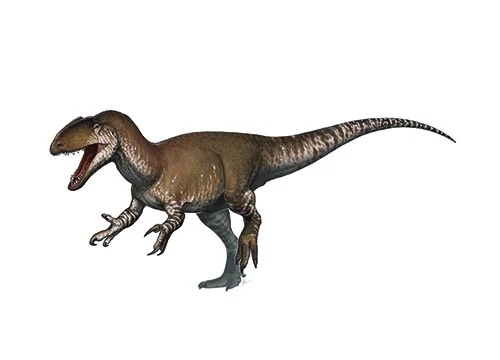Neovenator (New hunter)

Nee-oh-ven-ah-tor
Hutt, Martill & Barker – 1996
Carnivore
Estimated 7-8 meters long
Large Theropod
N. salerii (type)
UK, Isle of Wight
Early Cretaceous, 130-125 million years ago
Neovenator Facts
Neovenator was a genus of theropod dinosaur that lived during the Early Cretaceous period, approximately 125-130 million years ago. Its fossils were first discovered on the Isle of Wight in the United Kingdom, from which it derives its name.
The new hunter was a relatively large theropod, measuring around 7-8 meters (23-26 feet) in length and weighing up to 1,000 kg (2,200 lbs). It had a long, slender skull with a mouth full of sharp teeth, which it likely used to hunt and feed on other animals.
One of the most distinctive features of Neovenator was the large, curved claws on its hands, which could have been used to grasp and hold onto prey. It also had long, powerful legs with three-toed feet, which allowed it to move quickly and efficiently across the landscape.
Neovenator is known from several partial skeletons and isolated bones, which have provided valuable information about its anatomy and behavior. For example, its fossils suggest that it was a fast and agile predator, capable of taking down a variety of prey.
In conclusion, Neovenator was a formidable predator that roamed the Earth during the Early Cretaceous period. Its sharp teeth, powerful legs, and large claws made it a highly efficient hunter, and its fossils serve as a reminder of the incredible diversity of life that existed on Earth millions of years ago. The discovery and study of dinosaurs like Neovenator help us to better understand the history of our planet, and the important role that paleontology plays in uncovering this history.



